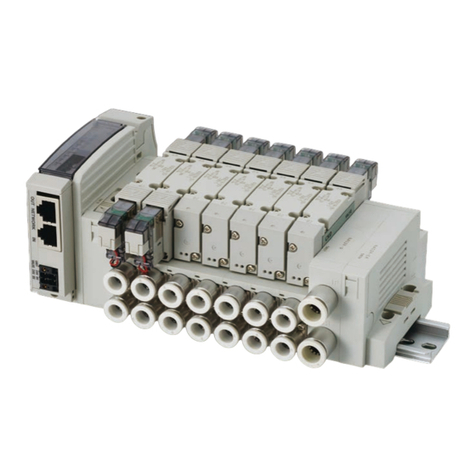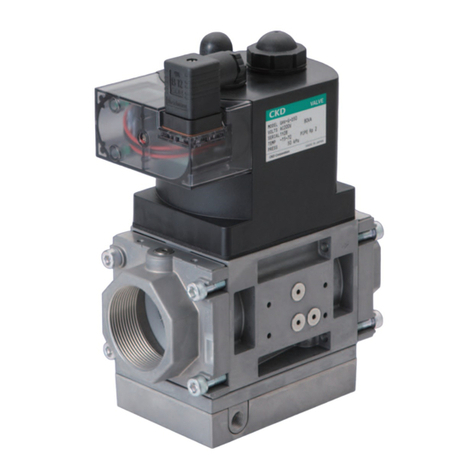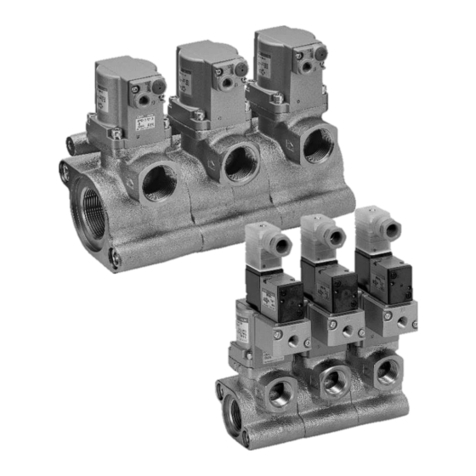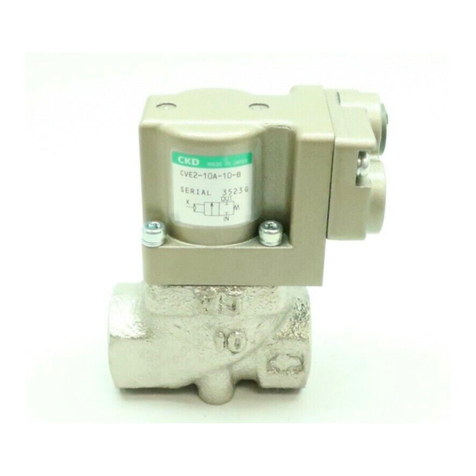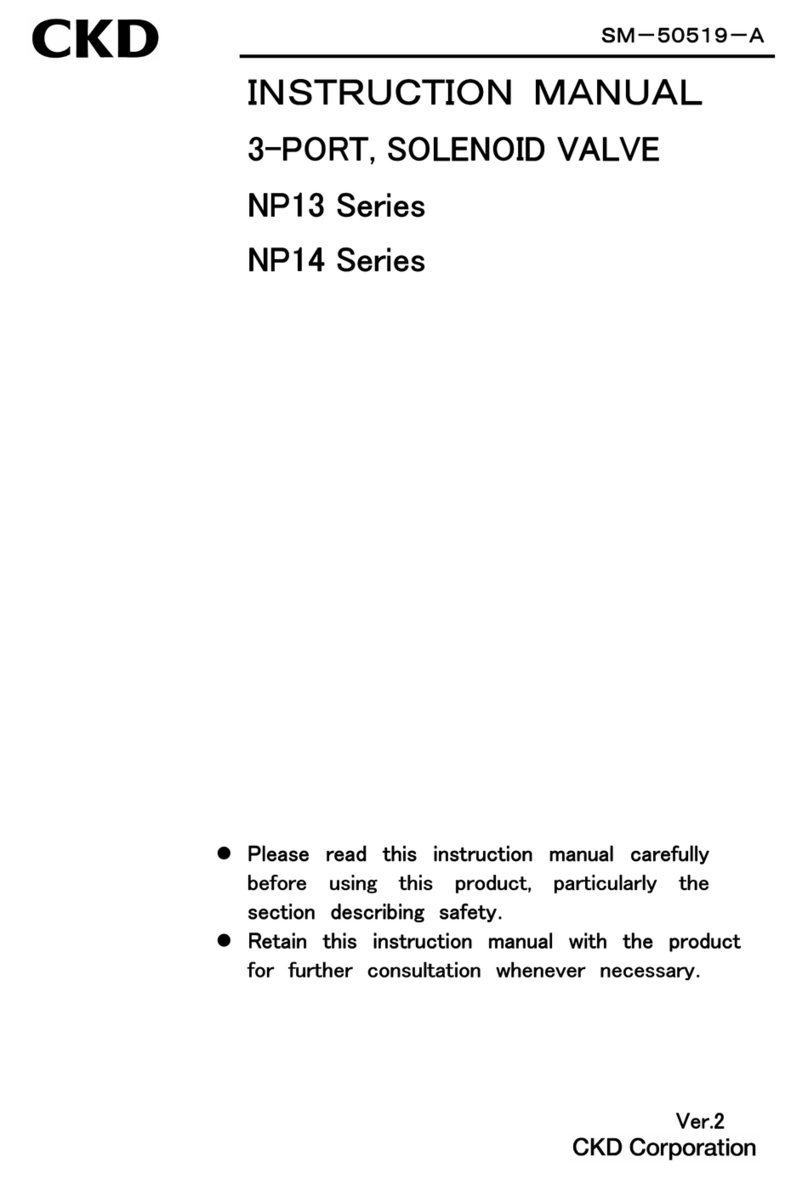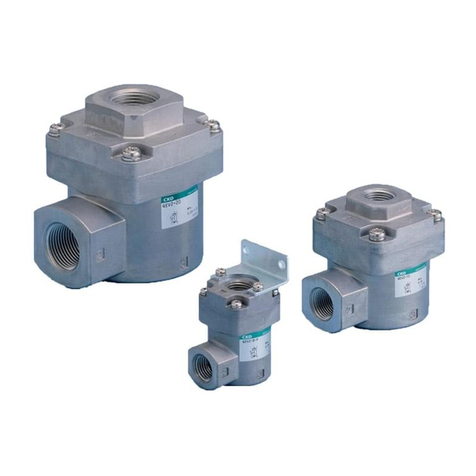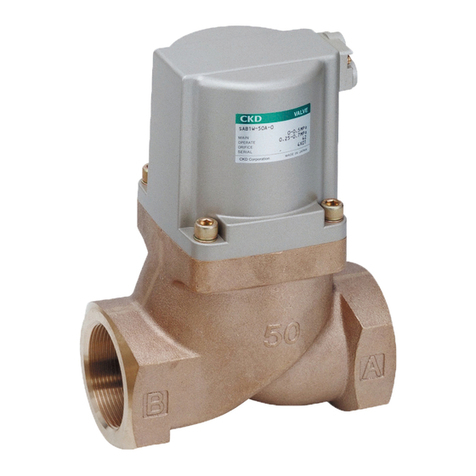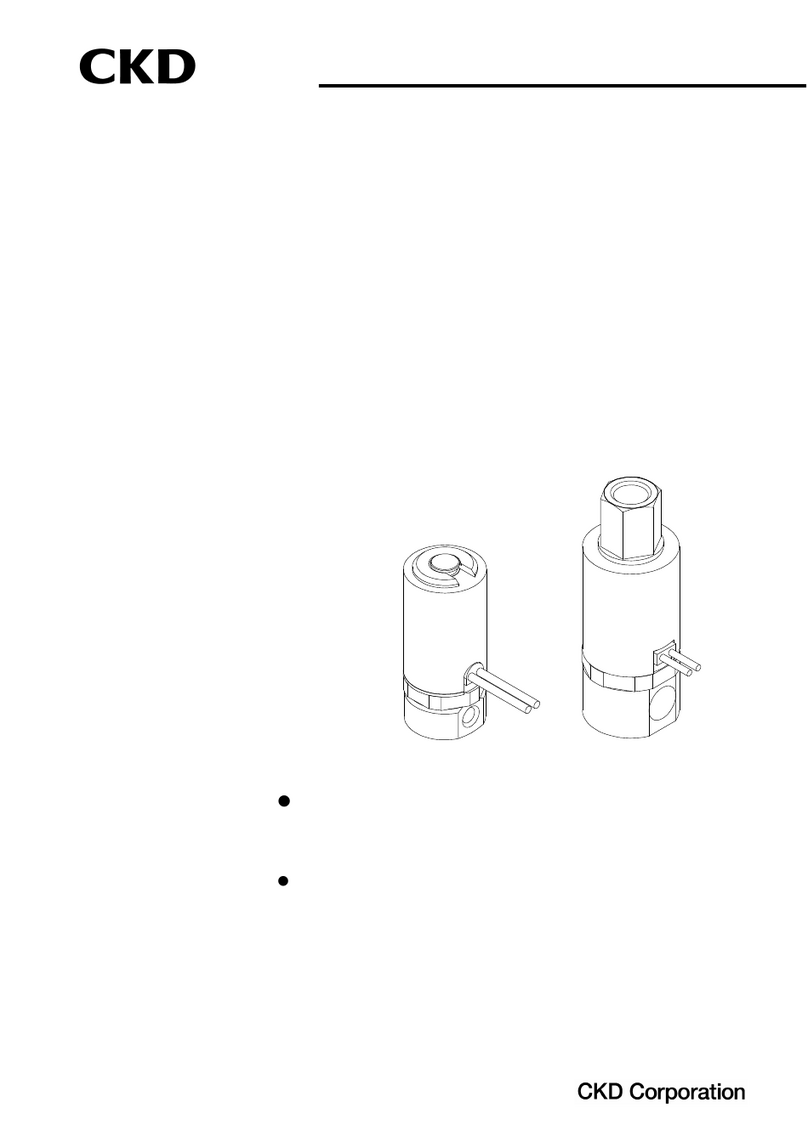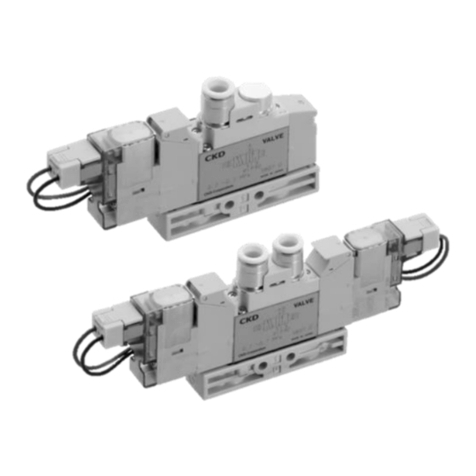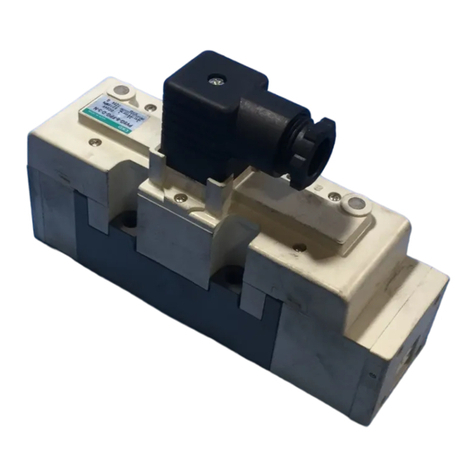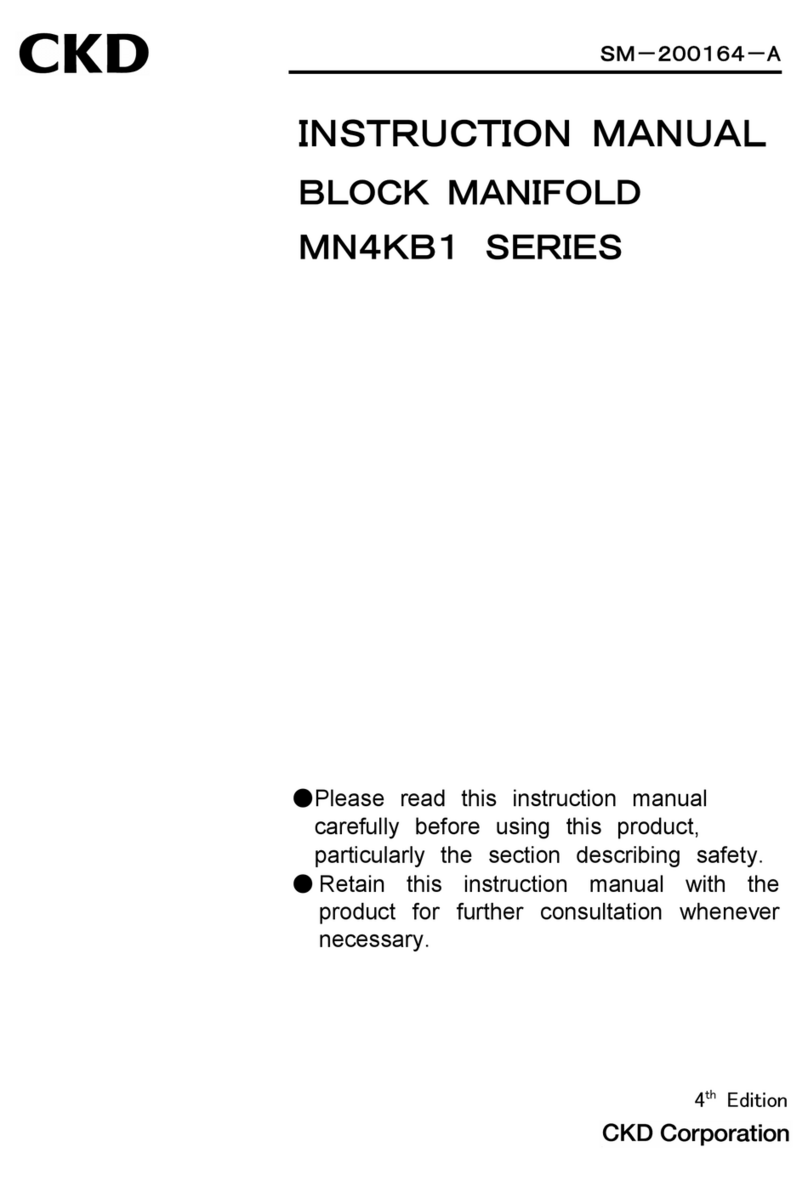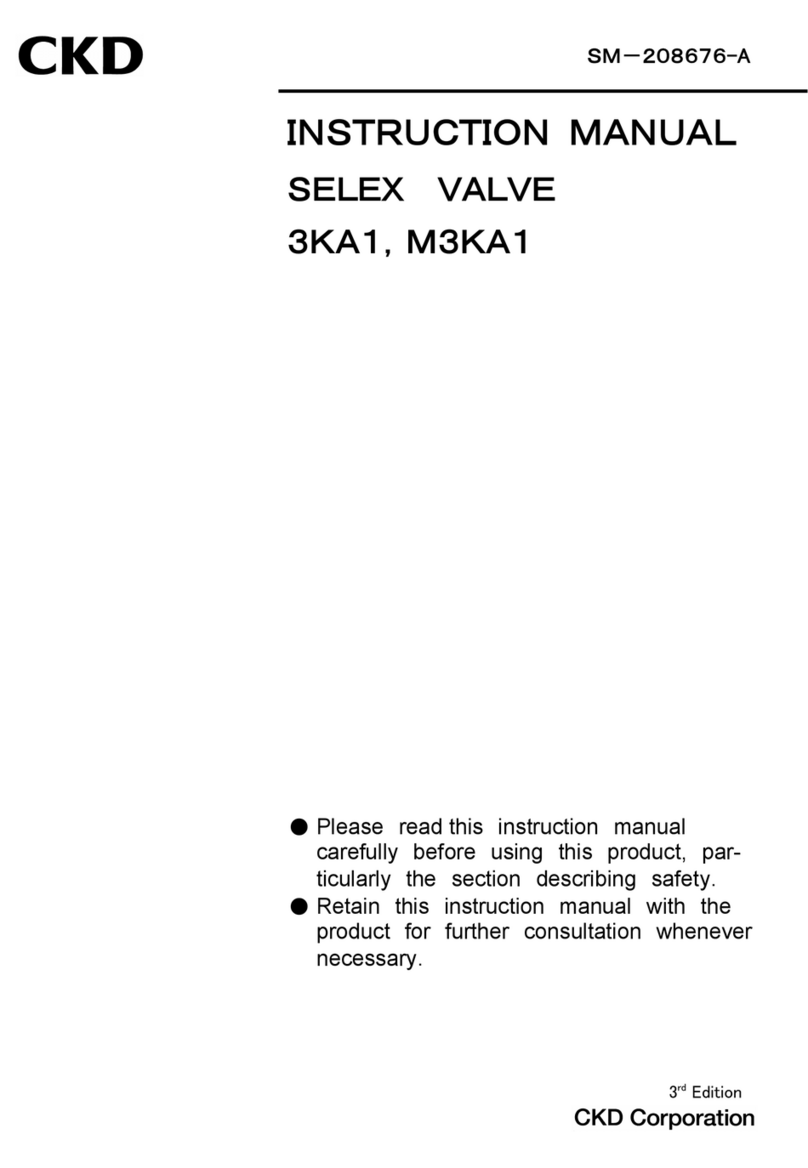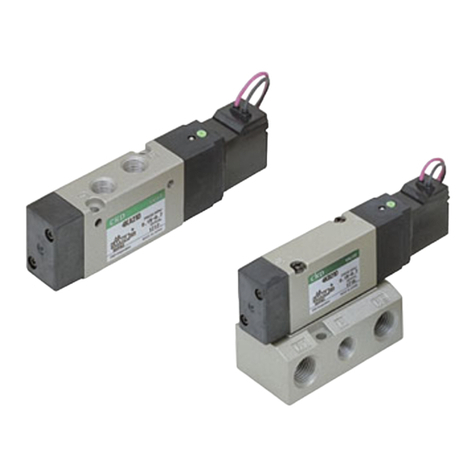
SM-
SM-SM-
SM-50776
5077650776
50776-A
-A-A
-A
-1-
Safety precautions
When designing and manufacturing a device using CKD products, the manufacturer is obligated
to manufacture a safe product by confirming safety of the system comprising the following items:
Device mechanism
Pneumatic or water control circuit
lectric control that controls the above
It is important to select, use, handle, and maintain the product appropriately to ensure that the
CKD product is used safely.
Observe warnings and precautions to ensure device safety.
Check that device safety is ensured, and manufacture a safe device.
1
11
1.
..
.This product is designed and manufactured as a general industrial machine part.
This product is designed and manufactured as a general industrial machine part.This product is designed and manufactured as a general industrial machine part.
This product is designed and manufactured as a general industrial machine part.
It must be handled by someone having sufficient knowledge and experience.
It must be handled by someone having sufficient knowledge and experience. It must be handled by someone having sufficient knowledge and experience.
It must be handled by someone having sufficient knowledge and experience.
2
22
2.
..
.Use this product within
Use this product within Use this product within
Use this product within its
itsits
its specifications.
specifications. specifications.
specifications.
Consult with CKD for details when using the product beyond the unique specification range,
outdoors, or in the following conditions or environment: Additionally, the product must not be
modified or machined.
① Use for special applications requiring safety including nuclear energy, railroad, aviation,
ship, vehicle, medical equipment, equipment or applications coming into contact with
beverage or food, amusement equipment, emergency shutoff circuits, press machine,
brake circuits, or for safeguard.
② Use for applications where life or assets could be adversely affected, and special safety
measures are required.
3
33
3.
..
. Observe corporate standards and regulations, etc., related to the safety of device
Observe corporate standards and regulations, etc., related to the safety of device Observe corporate standards and regulations, etc., related to the safety of device
Observe corporate standards and regulations, etc., related to the safety of device
design and control, etc.
design and control, etc.design and control, etc.
design and control, etc.
ISO4414, JIS B 8370 (pneumatic system rules)
JFPS2008(principles for pneumatic cylinder selection and use)
Including High Pressure Gas Maintenance Law, Occupational Safety and Sanitation Laws,
other safety rules, body standards and regulations, etc.
4
44
4.
..
.Do not handle, pipe, or remove devices before confirming safety.
Do not handle, pipe, or remove devices before confirming safety.Do not handle, pipe, or remove devices before confirming safety.
Do not handle, pipe, or remove devices before confirming safety.
① Inspect and service the machine and devices after confirming safety of the entire system
related to this product.
② Note that there may be hot or charged sections even after operation is stopped.
③ When inspecting or servicing the device, turn off the energy source (air supply or water
supply), and turn off power to the facility. Discharge any compressed air from the system,
and pay enough attention to possible water leakage and leakage of electricity.
④ When starting or restarting a machine or device that incorporates pneumatic components,
make sure that the system safety, such as pop-out prevention measures, is secured.
5
55
5.
..
.Observe warnings and cautions on the pages below to prevent accidents.
Observe warnings and cautions on the pages below to prevent accidents.Observe warnings and cautions on the pages below to prevent accidents.
Observe warnings and cautions on the pages below to prevent accidents.
WARNING
WARNINGWARNING
WARNING
